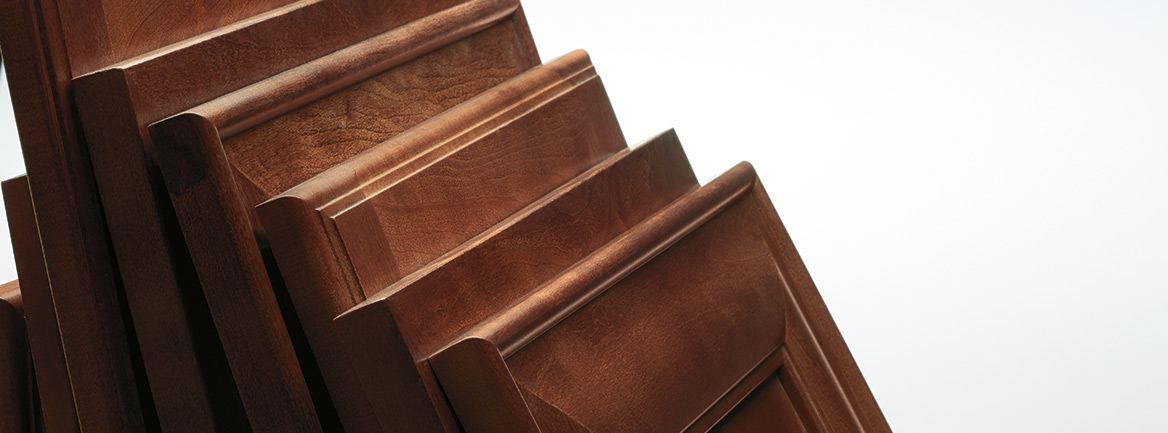
How to Choose the Right Cabinet Material
Where it all starts
Kemper’s innovative thinking first starts with smart material selection. Just as no two trees are alike, no two pieces of material are the same, which results in unique variations of strength, versatility and appearance.
What are natural wood materials?
In general, natural wood is the organic material you get when you harvest trees. The trunk, branches, limbs and stumps are all used to create building materials used in homes, furniture, and, of course, cabinets.
In your quest to find your favorite cabinet wood type, consider that there are several different natural characteristics of wood cabinets that offer unique, distinguishing features to compliment the look you want. In addition to grain, natural wood materials exhibit defining characteristics such as mineral deposits, knots and sap runs that also contribute to its beauty, and are highlighted by stains and glazes.
Common Natural Characteristics
- Bird Pecks – Small marks in the grain pattern caused by pecking birds
- Burl – A swirl or twist in the grain of the material that does not contain a knot
- Sound Knot – A knot solid across its face, which shows no sign of decay
- Unsound Knot – A circular area that once formed the base of a branch or twig
- Wormholes – Holes in the material ranging in size to a maximum of 1/16”
- Sugar Tracks – Yellowish to dark brownish streaks that run throughout the material
- Mineral Streaks – Streaks of color ranging from olive to blackish-brown typically following grain pattern
- Gum Streaks – Mineral-like streaks of color naturally occurring only in Cherry
- Heartwood – The mature, usually darker material, extending from the sapwood to the center tissue
- Sapwood – Lighter colored parts that grow from inside the bark to the heartwood
Kemper offers several different types of wood materials so that you can have options to achieve the perfect wooden cabinets for your kitchen. Here are some of the key things to know about some of our most popular cabinet materials.
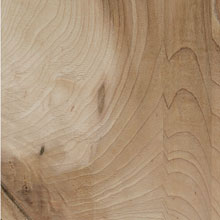
Cherry Wood Cabinets
Choosing Cherry as the material in your cabinet project will bring a sense of warmth to your design.
Things to know about cherry wood:
- Fairly uniform texture
- Smooth, close-grained appearance
- The sapwood can show mineral streaking, fine pinholes, and pitch pockets
- Light-sensitive materials that darkens with age, giving it a lustrous patina
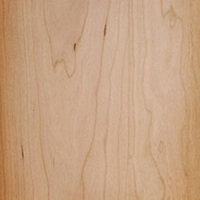
Maple Wood Cabinets
Maple wood is a popular cabinet material due to its design versatility.
Things to know about maple wood:
- Smooth, even, fine wood grain
- Strong, resilient hardwood
- Wood grain can include fine brown lines, mineral streaks, wavy or curly graining, and small, black, birds-eye dots
- Predominately white or creamy-white in color with occasional reddish-brown tones, maple wood works well with a large variety of finishes, glazes, stains or paints
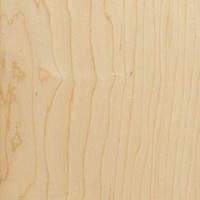
Rustic Alder Wood Cabinets
Rustic alder wood is a lighter, softer wood compared to other hardwoods, with warm light brown and reddish undertones.
Things to know about alder wood and rustic alder wood:
- Stable staining surface
- Rustic style introduces a more dramatic wood grain
- Rustic may also include pin holes, knots – open and closed of various sizes and colors, small cracks, worm holes and tracks, bird pecks and mineral streaks
- Can dent and mar more easily, due to its softer, lighter nature
View Inspiration Gallery Photos Featuring Alder Wood
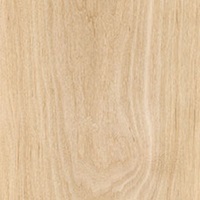
Oak Wood Cabinets
Oak wood has long been known as a strong, durable material for building and furniture. The same holds true for oak wood cabinets.
Things to know about oak wood:
- Durable and known for being resistant to everyday wear
- Distinctive wood grain featuring prominent straight lines, arches and points
- May also include wormholes, pin stripes, knots, and wild, varying grain patterns
- Mineral deposits may appear as green, yellow and even black streaks
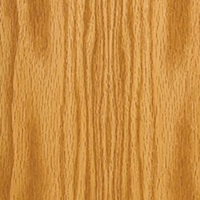
Hickory Wood Cabinets
Hickory cabinets have a naturally contrasting appearance due to the heartwood and sapwood of the Hickory wood. The color may range from blonde or white to reddish-brown and dark brown
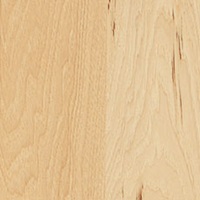
Is composite wood a good material for cabinets?
Composite materials provide a great deal of flexibility and benefits that natural materials aren’t always able to achieve. You should carefully consider these options when looking for the perfect material for your cabinet project. Will your cabinets be going into a high-traffic environment? Will they be exposed to moisture or a large amount of direct sunlight? Composite materials can help reduce the impacts of these factors and more.
PureStyle™ Laminate
PureStyle laminate cabinets use continuous component wrap technology to combine exceptional durability with a beautiful paint-style look.
This innovative cabinet material features:
- Resistance to moisture and UV light
- Resistance to warping and heat damage
- Resistance to expansion and contraction
- Reduction in the potential for de-lamination
- Reduction in the potential for peeling or cracking
PureStyle brings all the benefits of a durable, hard-working material while effectively emulating the beauty of a true 5-piece painted cabinet door. View Echo PureStyle Digital Brochure

Specialty Laminates: Unique and Durable Style
Specialty Laminates feature MDF core panels with integrated high-definition wood texture or high gloss laminate surface coat to bring you the best of both worlds: style and durability.
Things to know about Specialty Laminates:
- Wide-selection of textures and finishes
- Durable and easy to clean surfaces
- Proven performance for years of wear and tear
- Consistent and stable product with resistance to warping and heat damage, moisture, UV light, expansion and contraction, de-lamination, peeling or cracking
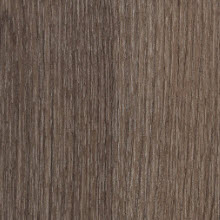
What's next?
Once you decide what material is right for you, there are still other choices to be made and questions to be answered: What shape of cabinet door do I want? What finish do I like best? What storage options are available to make my life easier? Kemper has tools that will help you answer all these questions and more.
- Browse our Product Gallery or our Inspiration Gallery to find door styles and finishes that appeal to your style in the material that fits your needs best. Both galleries offer the option to filter your selection to only the styles available in the materials you are most interested in.
- Use our compare tool in the product gallery to see your three favorite door styles or finishes side-by-side.
- Favorite your top choices so that they’re easy to find when you are consulting with your designer.
- Download our Planning Guide and use the checklists, worksheets, and other helpful tools in the guide to help make your project successful.
Keep exploring Kemper Cabinets articles for more helpful tips and advice for navigating your cabinet project from start to finish.



